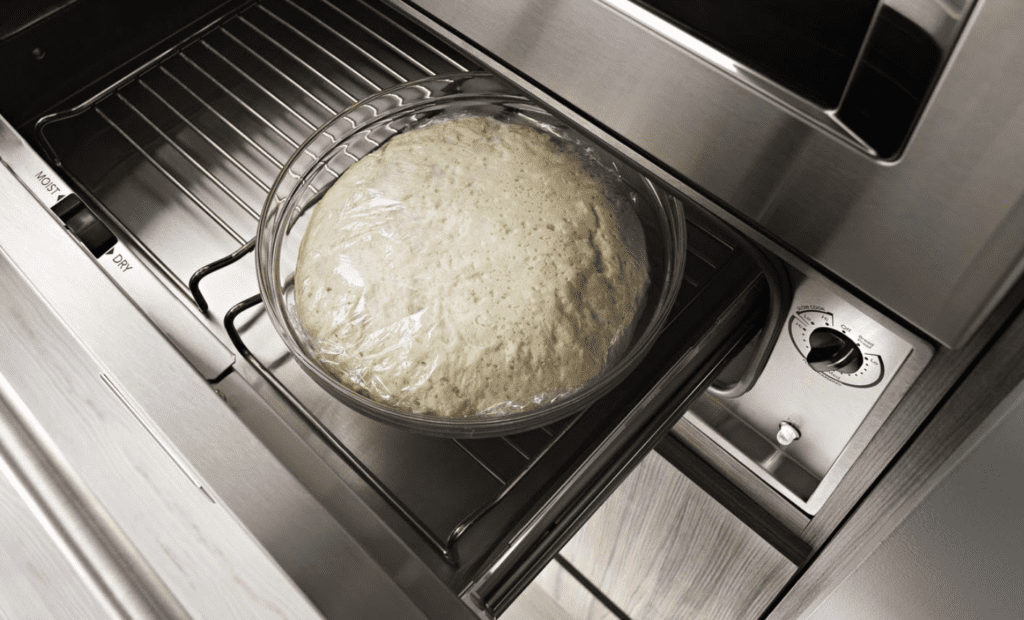
Oven proofing is an important and useful step in a variety of baking recipes. This technique helps keep the dough from rising too quickly while in the oven, leading to lighter and fluffier baked goods.
To help you master this skill, here’s a guide on how to properly oven proof your dough:
What is oven proofing

Oven proofing is a technique used in baking that involves allowing dough or batter to rest before baking.
The idea behind this technique is that allowing dough or batter to sit in the oven for a set amount time will help develop flavor and texture in the final product.
The rest time also helps reduce gluten development in more delicate doughs like puff pastry, which can make them easier to work with and result in a flakier end product.
Ensure that you have the correct ingredients
Before setting out to proof your dough, be sure that you have all of the right ingredients. Different types of dough require different amounts of flour, water, butter, salt, sugar, and other ingredients for proper consistency.
Take care to measure everything correctly so that your end result will turn out as expected.
Allow for adequate rising time
Most recipes use at least two rises before being placed in the oven – once prior to shaping the dough and another before it’s cooked.
While longer rises are beneficial for flavor development, be careful not to let them go too long or else the resulting product can become dense or rubbery.
Make sure your environment is ideal for proofing
The temperature and humidity of your kitchen affects how quickly (or slowly) your dough will rise.
A warm room is great for speeding up the process but make sure it won’t cause the dough to over-proof or otherwise distorting its texture and shape.
Pre-heat your oven before baking
Pre-heat your oven five or ten minutes prior to baking so that you achieve a consistent temperature throughout the oven when baking your goodies.
This will ensure even cooking throughout with no cold spots where undercooked or raw spots may form due to uneven temperatures during cooking.
Proofing is the process of allowing dough to rise before baking it into bread or other baked goods.
Proofing in an oven is a great way to create perfect results every time, with little additional effort.
Adjust Temperature Settings
When proofing, you’ll need to adjust the temperature settings for your oven. Since much of the heat dissipates during the rising period, it’s best to set your oven to about 25-30 degrees Fahrenheit lower than usual.
This will maximize the rising effect, while preventing any overproofing or scorching of the bread or other goods while they rise.
Place Dough in Oven and Close Door
Once you’ve adjusted your temperature settings, place your dough in an ungreased dish or pan and close the door firmly behind it.
Don’t forget to keep a close eye on the clock – too much proofing can cause flatness in your finished product!
Check for Done-ness Every 10 Minutes
After 10 minutes of proofing in the oven, carefully open up the door and check if your items have doubled in size yet.
If not, try rotating them around and let them sit for another 5 minutes. Continue checking every 5 minutes until finished – this should take no more than 30 minutes total from start to finish.
Benefits of Oven Proofing
Not only does proofing your dough help produce higher quality goods – as each item should rise evenly – but it also removes guesswork when transferring delicate or sticky items mid-process.
Additionally, using an oven ensures that none of your baked goods become over-pressed during transport from one area with high humidity (like a kitchen sink) to a dryer area (such as a countertop).
All in all,Proofing in an oven helps guarantee high quality products – batch after batch – every single time you bake!




